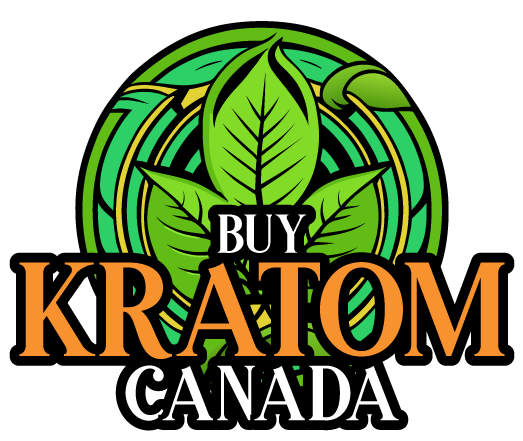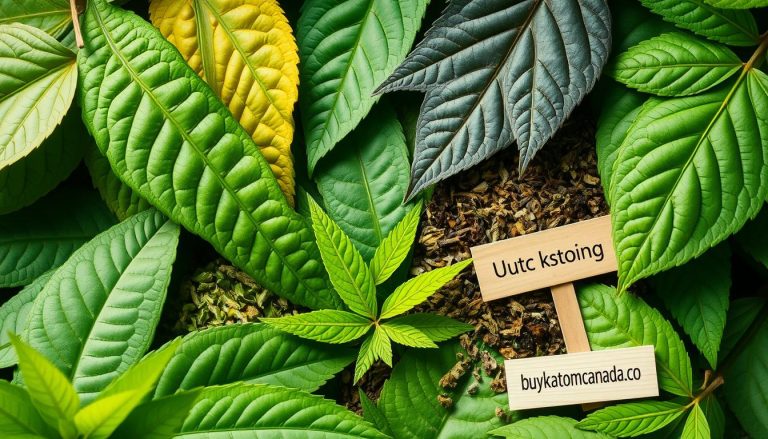How to Use Kratom Safely: Dosage & Best Practices
Kratom is becoming more popular in the West, and it’s important to know how to use it safely. It comes from Southeast Asia and has been used for centuries as a mild stimulant and medicine. But, with more people using it for fun, there are worries about its safety and how much to take. So, what’s the best way to use kratom without risks?
Key Takeaways
- Kratom is a plant native to Southeast Asia with a long history of traditional use as a mild stimulant and medicine.
- Responsible kratom use requires understanding appropriate dosages, potential side effects, and best practices for consumption.
- Kratom’s legal status varies across the world, and users should be aware of local regulations.
- Kratom may interact with other substances, so users should consult with healthcare providers before use.
- Ensuring the quality and purity of kratom products is crucial for safe and effective use.
Understanding Kratom: Origins and Traditional Use
Kratom comes from the Mitragyna speciosa Korth. tree, a coffee family member. It’s native to Southeast Asia. Kratom has been used for centuries as a mild stimulant and for its medicinal properties in Indonesia, Malaysia, and Thailand.
Kratom’s History in Southeast Asia
For generations, Southeast Asia’s people have used kratom for many things. They chew its leaves, brew them into tea, or make powder. It’s a key part of their traditional medicine.
It helps with high blood pressure, diarrhea, coughs, and fevers. Kratom is a big part of their health care.
Traditional Medicinal Uses of Kratom
- Treating hypertension
- Alleviating diarrhea
- Suppressing coughs
- Relieving fevers
“Kratom has been used for centuries in Southeast Asia, particularly in countries like Indonesia, Malaysia, and Thailand, where it is native to the region.”
Kratom is very useful in traditional health care in these countries. Its long history and cultural importance have made it popular in the West too.
Kratom’s Increasing Popularity in the West
In recent years, kratom has become more popular in North America and Europe. It’s estimated that 10-16 million people in the United States use it. This number varies from 1.3% to 6.1% based on surveys.
Several factors have led to kratom’s growing popularity. People use it as a stimulant, analgesic, and opioid withdrawal management tool. They believe it gives a mild energy boost, helps with pain, and aids in opioid withdrawal.
Reasons for Kratom’s Rising Use
The ease of finding kratom online, in specialty shops, and even gas stations has helped its popularity. Kratom use in the west is also made easier by its availability and the lack of strict rules in many places.
- Purported stimulant, analgesic, and opioid withdrawal management properties
- Increased availability through online sales, specialty shops, and gas stations
- Lack of strict regulations in many Western countries
As kratom popularity grows, it’s important to know about its history, uses, and benefits and risks. Understanding these can help people make safe choices about using kratom.
Kratom’s Legal Status and Regulatory Challenges
The legal status of kratom is still up for debate. In the U.S., kratom is not seen as a dietary supplement. The FDA has not set any rules for kratom products. This has raised concerns about the quality and safety of kratom available.
Some states in the U.S. have banned or restricted kratom. The DEA has also labeled kratom as a “drug of concern.” This makes it hard for people to know if kratom is safe or not.
“The legal status of kratom remains a complex and evolving issue, with varying approaches taken at the state and federal levels. This lack of consistent regulation creates uncertainty and potential safety concerns for those interested in using kratom.”
For those in Canada looking into kratom, it’s key to keep up with legal changes. It’s wise to buy from trusted sources like buykratomcanada.co. They focus on quality and being open. This way, users can make smart choices about kratom.
The ongoing debate on kratom’s legality is important. Everyone involved should talk and work together. We need rules that protect health while allowing kratom’s benefits.
How to Use Kratom Safely: Dosage, Side Effects, and Best Practices
Using kratom responsibly is key to a good experience and avoiding risks. Kratom dosage is important, with small amounts giving a stimulating effect. Larger amounts can be more sedative and help with pain.
Start with a small dose, like 2-4 grams, and increase as needed. Don’t take more than 8 grams at once. High doses can cause side effects like weight loss, dry mouth, and liver damage.
- Always use kratom responsibly and avoid combining it with other substances, as this can increase the risk of adverse reactions.
- Work closely with healthcare providers to monitor your kratom use and potential risks, especially if you have any underlying medical conditions.
- Prioritize purchasing kratom from reputable sources to ensure the quality and purity of the product.
“Moderation and caution are key when it comes to kratom use. Start low, go slow, and always be mindful of your body’s response.”
By following these kratom best practices, you can enjoy its benefits while avoiding risks.
Kratom’s Potential Benefits and Risks
Kratom is a plant from Southeast Asia that’s getting more attention. People say it helps with well-being, boosts energy, and relieves pain and anxiety. But, we need more research on its safety and effectiveness.
Reported Benefits of Kratom Use
Kratom fans believe it has many benefits, such as:
- Improved mood and sense of well-being
- Enhanced focus, concentration, and physical stamina
- Relief from chronic pain, muscle aches, and joint discomfort
- Alleviation of anxiety, stress, and depression symptoms
Potential Risks and Side Effects of Kratom
Even though kratom has its fans, it’s not without risks. Some possible side effects and concerns include:
- Liver damage and impaired liver function
- Elevated blood pressure and heart rate
- Dizziness, drowsiness, and sedation
- Hallucinations and other psychoactive effects
- Potential for addiction and withdrawal symptoms
Also, kratom can be mixed with other substances, leading to serious health issues. It’s important to use kratom responsibly and ensure its quality.
“The scientific evidence on the efficacy and safety of kratom is still limited, and potential risks and side effects must be carefully considered.”
Kratom and Substance Use Disorders
Kratom is a plant-based substance from the Mitragyna speciosa tree. It has become popular for managing substance use disorders. Some people use it to ease opioid withdrawal symptoms or as a pain relief alternative to opioids. But, the safety and effectiveness of kratom for these uses are still debated.
Using Kratom for Opioid Withdrawal Management
Kratom’s alkaloids can interact with opioid receptors in the brain. This might help ease opioid withdrawal symptoms. Some studies suggest kratom could be useful in managing kratom opioid withdrawal. Yet, long-term kratom use can lead to dependence and withdrawal symptoms like opioids. Kratom substance use disorders have been reported, showing the need for more research and caution.
Some people have found kratom helpful as an opioid alternative for pain. But, the long-term safety and effectiveness of this approach are still unclear. Healthcare providers and those struggling with substance use disorders should carefully consider the potential benefits and risks of using kratom.
“The use of kratom for the management of substance use disorders requires a delicate balance, as it can potentially be a double-edged sword. More research is needed to fully understand its role and ensure its safe and responsible use.”
The relationship between kratom and substance use disorders is complex. More research and open discussions with healthcare providers are crucial. This will help us better understand kratom’s potential benefits and risks in managing substance use disorders.
Kratom’s Interaction with Other Substances
Kratom, a plant gaining popularity in North America, can mix badly with other drugs and substances. This can cause serious side effects. It’s important for both healthcare providers and kratom users to know about these risks.
One big worry is kratom and opioids. Mixing kratom with opioid painkillers can make the effects worse. This can lead to a higher chance of overdose and even death.
Also, using kratom with other mind-altering substances like alcohol or benzodiazepines is very risky. The effects of these substances together can be too much for the body. This can cause serious health problems.
“Kratom may interact with a variety of medications, including antidepressants, blood thinners, and certain other prescription drugs. It’s crucial to consult with a healthcare provider before using kratom, especially if you are taking any other medications.”
To use kratom safely, users should tell their doctors about it. This is especially true when getting medical treatment or new medications. Doctors can then give the right advice on using kratom and other substances.
Knowing about kratom’s interactions and taking precautions can help users enjoy its benefits. But, it’s also important to use it responsibly. Talking openly with healthcare providers is key to safe and effective kratom use.
Adulteration and Quality Control Concerns
In the kratom world, worries about adulteration and quality control are big. Some kratom products have heavy metals, harmful germs, and other dangers. This is a big risk to people’s health and hurts the kratom industry’s trust.
Ensuring Safe and Pure Kratom Products
The American Kratom Association (AKA) has started a Good Manufacturing Practice (GMP) Standards Program. This program helps make sure kratom products are safe and pure.
But, even with these steps, buyers should be careful. Buy kratom from places that are open about where they get it and how they test it. Stay away from kratom that’s too cheap or doesn’t tell you where it comes from.
- Look for vendors who are transparent about their sourcing, testing, and quality control processes.
- Avoid any kratom products that seem suspiciously cheap or lack clear information about their origins and testing.
- Ensure that the kratom you purchase is from a trusted and reliable source to minimize the risk of adulteration or contamination.
By being careful and buying from trusted vendors, people can get safe and pure kratom. This meets the highest quality standards.
“Adulteration and quality control are critical issues in the kratom industry. Consumers must be diligent in sourcing their kratom from reputable vendors to ensure safety and purity.”
Kratom Research and Scientific Understanding
Kratom’s popularity has led to more research. But, many studies lack the depth needed to fully understand its effects. Case studies, poison control center reports, and coroner or medical examiner have often focused on rare and extreme events, rather than offering a balanced perspective.
To fill this gap, we need more research and a focus on evidence. Kratom research and a deeper kratom scientific understanding are key to safe use. This ensures kratom is used responsibly.
“The rise in kratom use has led to an increase in scientific research, but the resulting studies have often lacked the rigor needed to provide a comprehensive understanding of its potential benefits and risks.”
With more rigorous research, we can give healthcare professionals and the public the facts they need. This is vital for safe and responsible kratom use.
- Ongoing research is needed to better understand kratom’s interactions with other medications, its impact during pregnancy, and potential contamination with harmful substances.
- A more balanced, evidence-based approach is necessary to inform the public and guide healthcare providers on the appropriate use and management of kratom.
- Comprehensive and rigorous scientific studies can help dispel the confusion created by case reports and limited data, leading to a clearer understanding of kratom’s benefits and risks.
Working with Healthcare Providers and Responsible Use
As the debate on kratom goes on, it’s key for users to talk to their doctors about it. Responsible kratom use means telling your doctor how much kratom you take. This way, you both can decide if it’s safe for you.
Doctors need to know if you’re using kratom. You should tell them everything about your kratom use. This helps you both understand the good and bad sides of kratom. You can then figure out how to use it safely.
“Transparency and communication with healthcare providers are essential when using kratom,” says Dr. Sarah Wilkins, a family medicine practitioner. “By working collaboratively, we can ensure the safe and responsible use of this botanical.”
Here are some ways to use kratom responsibly:
- Tell your doctor about all the kratom you take, including how often and how much.
- Ask your doctor about the risks and benefits of kratom.
- Stick to the recommended amount of kratom and don’t take too much.
- Watch for any bad effects and tell your doctor right away if you notice them.
- Be ready to stop using kratom if your doctor advises you to.
By talking openly and working together, you and your doctor can make sure kratom is used safely. This way, you can enjoy its benefits without risks.
Conclusion
Kratom is a complex substance with a rich history in Southeast Asia. It’s gaining popularity in the Western world. While some people say it has benefits, the science on its safety and effectiveness is still limited.
There are worries about contamination, legal issues, and health risks. This makes it important to use kratom responsibly. It’s also key to talk openly with doctors and healthcare workers.
The team at BuyKratomCanada.co aims to give accurate info to help users make smart choices. By working together and staying alert, we can ensure kratom is used safely. The key takeaways are the need for more research, clear rules, and teamwork between users and healthcare experts.








